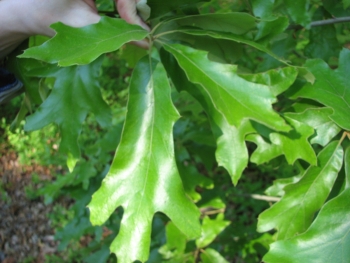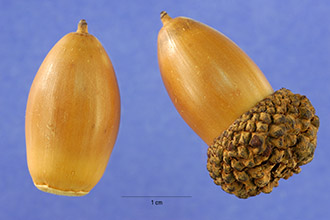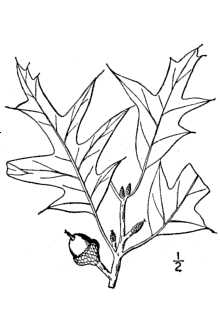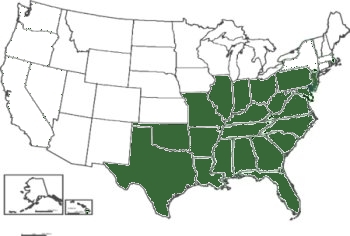Quercus falcata
  |
 |
Top Photo Courtesy Renee Brecht; Bottom, USDA |
Britton & Brown |
| Botanical name: | Quercus falcata |
| Common name: | southern red oak, Spanish oak |
| Group: | dicot |
| Family: | Fagaceae |
| Growth type: | forb/herb |
| Duration: | perennial |
| Origin: | native |
| Plant height: | to 90' |
| Bark: | dark, thick, with scaly ridges and deep furrows.Inner bark is not as yellow as Quercus velutina. |
| Leaves: | alternate, simple, bristle tipped lobes; may be 3 lobed with shallow sinuses or 5-7 lobes with deeper sinuses. |
| Flower: | monoecious, yellow green male catkins, females reddish on short spikes |
| Flowering time: | blooms early to mid May; fruit matures September to November of second year |
| Habitat: | dry or moist, infertile soils |
| Range in New Jersey: | through the coastal plain outside the pine barrens, decreasing northward |
| Heritage ranking, if any: | n/a |
| Distribution: |  |
| Misc. | Stone, 1910, says "The dark-glossy upper surface and lighter lower
surface, together with the long falcate terminal segments of the
leaves, give to the foliage a characteristic appearance. The outline of individual leaves varies greatly even on the same tree,..There is a form specially prevalent on the coast, with long triangular leaves, with three nearly equal, rather blunt, terminal lobes" (406). |